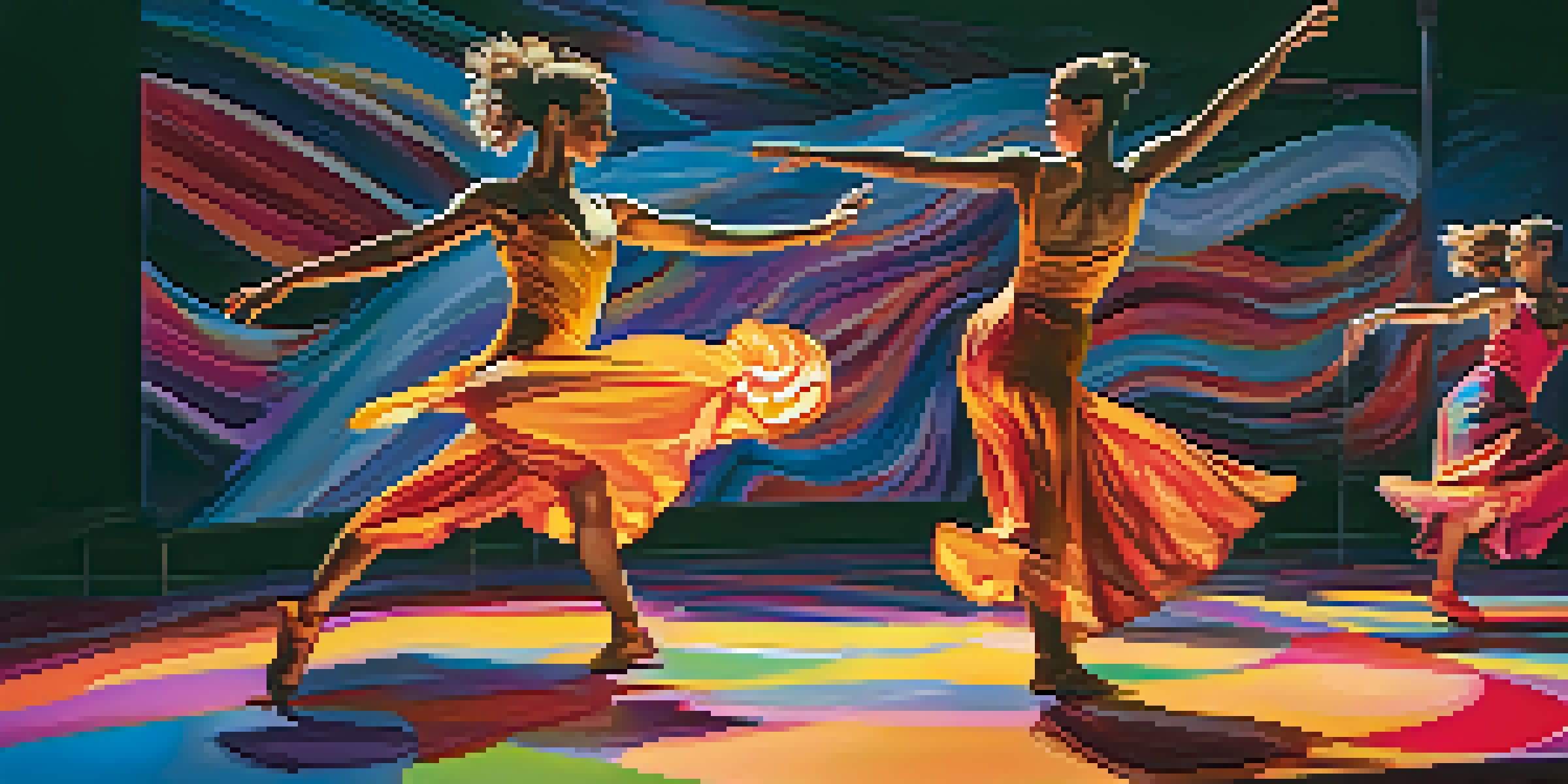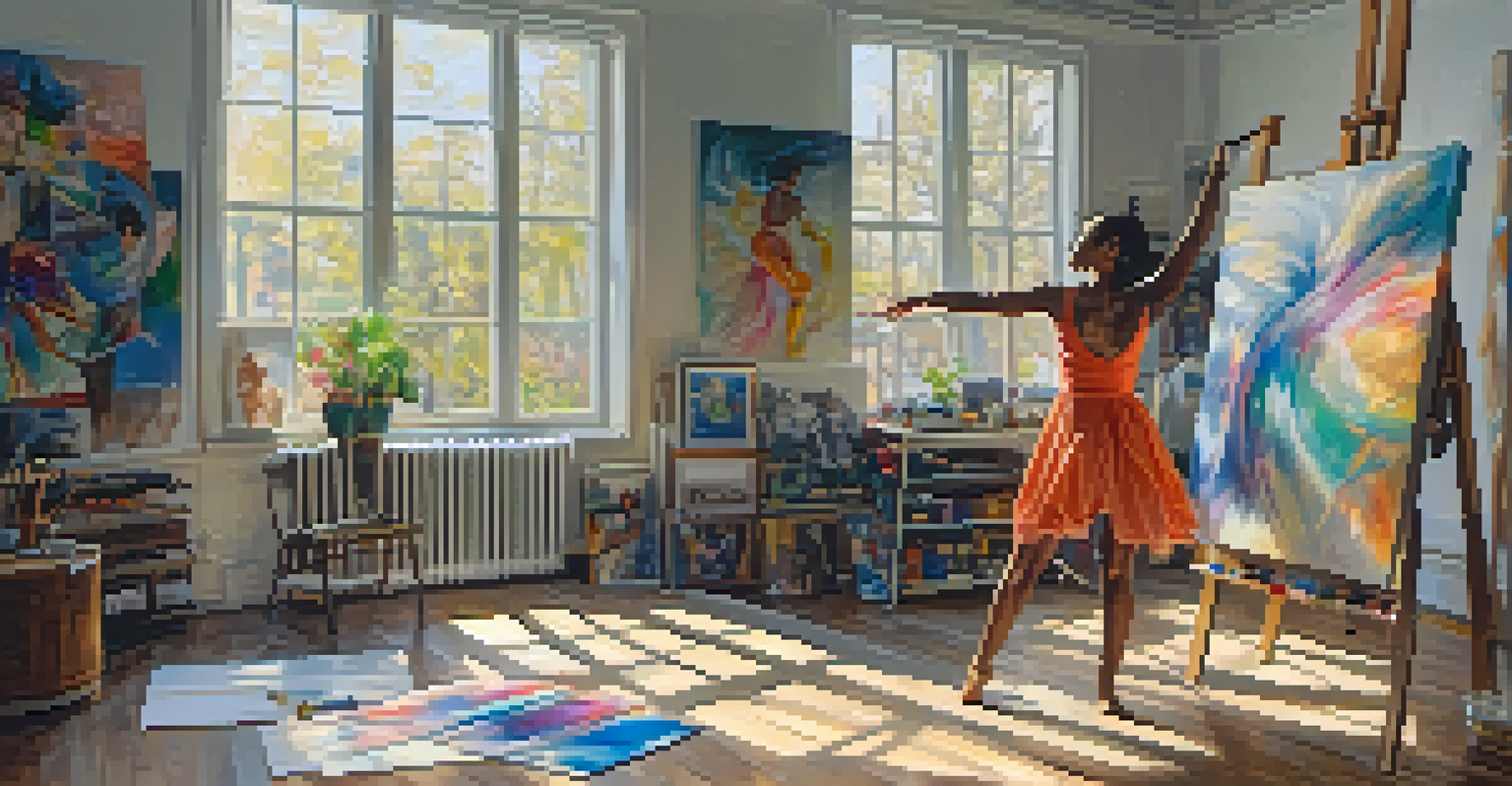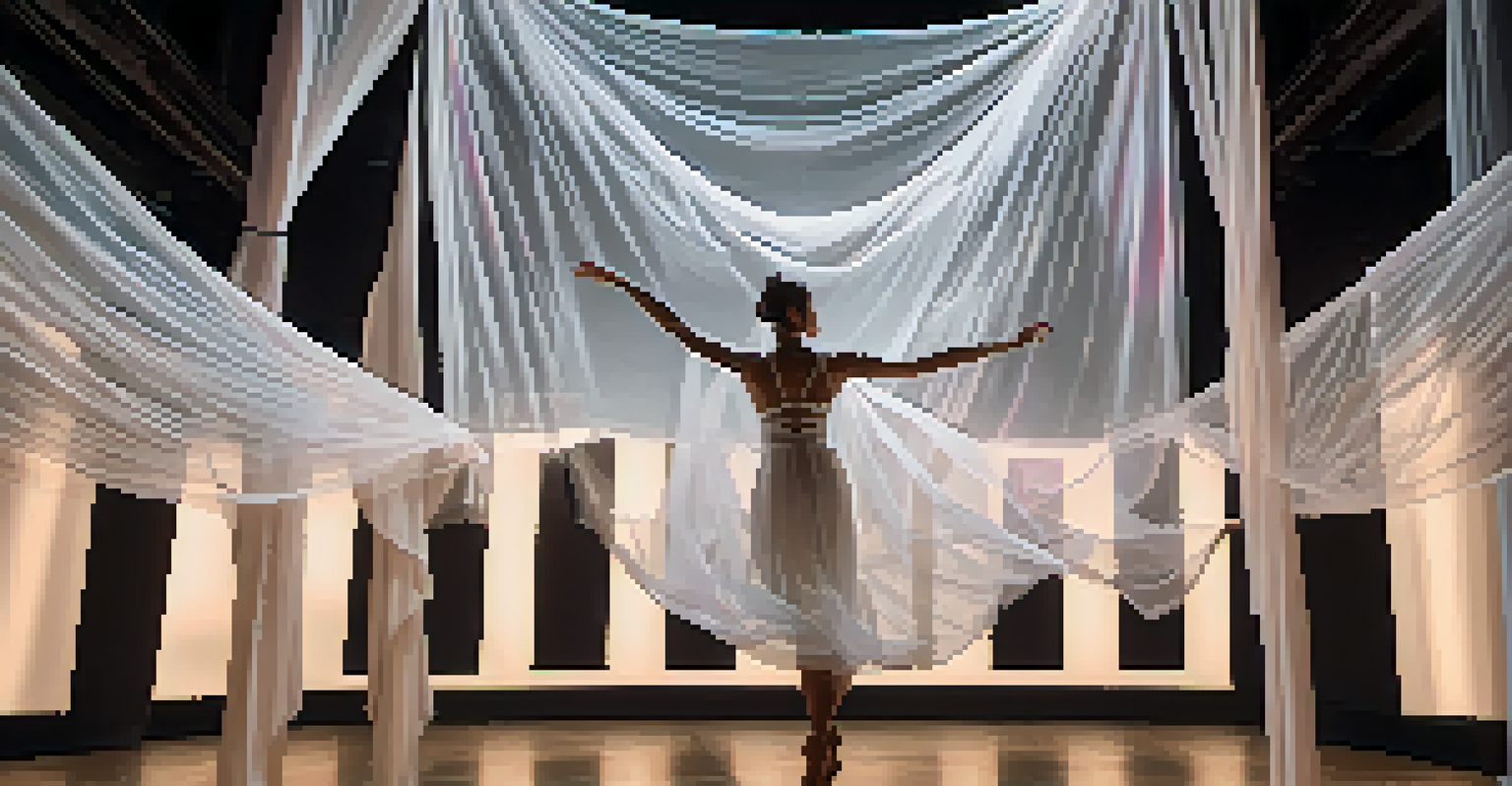Artistic Collaborations: Dance and Visual Arts Unite

The Magic of Artistic Collaboration: What It Means
Artistic collaboration occurs when artists from different disciplines unite to create something unique. Imagine a painter and a dancer working together, where the canvas comes alive with movement and color. This synergy not only enhances the creative process but also broadens the audience's experience, allowing them to appreciate art from multiple perspectives.
Art is the most beautiful of all lies.
Collaborations can range from live performances to installations that blend choreography with visual elements. For instance, a dance piece might be set against a backdrop of dynamic projections, creating an immersive environment. This interaction challenges the boundaries of traditional art forms, inviting viewers to engage in a multi-sensory experience.
Ultimately, these partnerships inspire innovation and push the limits of creativity. By merging the fluidity of dance with the static nature of visual arts, artists can tell stories that resonate on deeper levels, making the collaboration truly magical.
Historical Roots: Dance and Visual Arts Throughout Time
The relationship between dance and visual arts is not a new phenomenon; it has deep historical roots. Ancient cultures often incorporated dance into their rituals and celebrations, with visual art serving as both backdrop and storytelling medium. Cave paintings, for instance, depict figures that suggest movement, capturing the essence of dance long before the art form was formalized.

During the Renaissance, artists like Leonardo da Vinci explored the human form in both painting and sculpture, often inspired by the movements of dancers. This period saw a remarkable intersection of various art forms, with dance being celebrated through visual representation. Such historical connections remind us that the fusion of these disciplines is part of a rich legacy.
Artistic Collaboration Enhances Creativity
The fusion of dance and visual arts creates unique, immersive experiences that inspire innovation and broaden audience engagement.
In modern times, artists continue to draw inspiration from this historical synergy. Contemporary choreographers and visual artists often reference historical works, creating a dialogue that spans centuries and highlights the enduring connection between the two art forms.
Contemporary Collaborations: Innovations in Art
Today, the collaboration between dance and visual arts is thriving, driven by innovative technologies and fresh perspectives. Artists frequently explore new mediums, such as digital projections and interactive installations, to enhance their work. This approach not only captivates audiences but also redefines the boundaries of what art can be.
Collaboration allows us to know more than we are capable of knowing by ourselves.
For example, companies like the Merce Cunningham Dance Company have incorporated video art into their performances, creating a dynamic interplay between movement and visuals. Such collaborations expose viewers to a unique blend of sensory experiences, making each performance a one-of-a-kind event. The fusion of disciplines invites the audience to engage on multiple levels, sparking curiosity and dialogue.
Moreover, these contemporary partnerships often challenge societal norms and provoke thought. By addressing issues such as identity, culture, and technology through the lens of dance and visual arts, artists invite audiences to reflect on their own experiences, fostering a deeper understanding of the world around them.
Notable Collaborations: Inspiring Art Partnerships
Many renowned collaborations have significantly impacted both dance and visual arts. One of the most celebrated partnerships is between choreographer Pina Bausch and visual artist Anselm Kiefer. Their work combined powerful movement with striking visual elements, creating thought-provoking pieces that linger in the minds of audiences.
Another notable example is the collaboration between choreographer Wayne McGregor and visual artist Olafur Eliasson. Together, they explored the relationship between movement and light, resulting in performances that are as visually stunning as they are emotionally resonant. These partnerships not only highlight the beauty of collaboration but also inspire future generations of artists to think outside the box.
Historical Roots Connect Art Forms
Dance and visual arts have shared a deep historical relationship, influencing each other from ancient rituals to contemporary performances.
These examples serve as a reminder that when artists come together, they can create transformative experiences. By pooling their talents, they push each other to explore new ideas, ultimately enriching the cultural landscape for everyone.
Audience Engagement: Experiencing Art Together
One of the most exciting aspects of artistic collaboration is how it engages audiences in new ways. When viewers attend a performance that merges dance and visual arts, they're invited to participate in a dialogue between the two disciplines. This interaction encourages them to interpret the work through their own lens, making the experience deeply personal.
Moreover, collaborative projects often create immersive environments that draw audiences in. For example, installations that include live dance performances can transport viewers into a world where movement and visuals intertwine. This sense of immersion fosters a connection that goes beyond passive observation, prompting audiences to feel and reflect on what they see.
Ultimately, these experiences broaden the definition of art, inviting everyone to become part of the creative process. As audiences witness the harmony between dance and visual arts, they are reminded of the power of collaboration and its ability to inspire, challenge, and uplift.
The Future of Dance and Visual Arts Collaborations
As we look to the future, the possibilities for collaboration between dance and visual arts are limitless. Emerging technologies such as virtual reality and augmented reality offer exciting new avenues for exploration. These advancements can create entirely new experiences that further blur the lines between disciplines, allowing artists to engage with their audiences in unprecedented ways.
Furthermore, as the world becomes increasingly interconnected, artists from diverse backgrounds are coming together to create cross-cultural collaborations. These partnerships not only enrich the artistic landscape but also promote understanding and appreciation of different cultures through the universal language of movement and visual expression.
Future Collaborations Embrace Technology
Emerging technologies like virtual reality present new opportunities for artists to create innovative and cross-cultural collaborations.
In this evolving landscape, one thing remains clear: the collaboration between dance and visual arts will continue to thrive. As artists push the boundaries of creativity and challenge conventions, we can expect to see even more innovative and inspiring works that resonate with audiences around the globe.
Conclusion: Celebrating the Unity of Dance and Visual Arts
In conclusion, the collaboration between dance and visual arts is a celebration of creativity that transcends boundaries. These partnerships not only enrich the artistic community but also create meaningful experiences for audiences. By uniting the fluidity of movement with the impact of visual art, artists can convey powerful messages that resonate on multiple levels.
As we continue to witness these artistic unions, it's essential to appreciate the unique perspectives they offer. Each collaboration is an invitation to explore new ideas and engage with art in ways that challenge our perceptions and ignite our imaginations.

Ultimately, the fusion of dance and visual arts reminds us of the beauty of collaboration. It's a testament to the power of creativity and the endless possibilities that arise when artists come together to share their visions with the world.